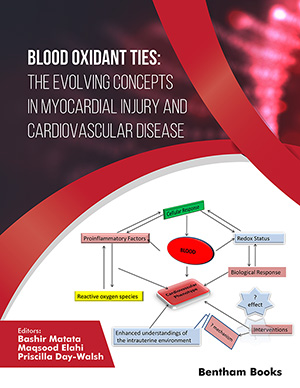Abstract
Background: SARS-CoV-2 is a virus that uses ACE2 to enter the host cell.
Aims and Objectives: This study aimed to evaluate the in silico inhibitory activity of polyphenols from Prunus armeniaca (P. armeniaca) on angiotensin-converting enzyme 2 (ACE2).
Methods: The efficacy of phytocompounds from P. armeniaca in inhibiting ACE2 was tested through molecular docking and dynamic analyses. The toxicological analysis of P. armeniaca was also evaluated.
Results: A total of twenty polyphenols were docked against the ACE2 active site, and four compounds showed interesting profiles. In vivo acute toxicity study demonstrated that the aqueous extract of Prunus armeniaca was safe.
Conclusion: Four compounds from Prunus armeniaca seem to exert an inhibitory potential of ACE2.
Keywords: SARS-CoV-2, ACE2, Prunus armeniaca L., molecular docking, molecular dynamic simulation, toxicity.
[http://dx.doi.org/10.1021/acs.molpharmaceut.0c00608] [PMID: 33464914]
[PMID: 33664170]
[http://dx.doi.org/10.3390/molecules26010039] [PMID: 33374759]
[http://dx.doi.org/10.1371/journal.ppat.1008536] [PMID: 32442210]
[http://dx.doi.org/10.1007/s13337-020-00642-7] [PMID: 33313362]
[http://dx.doi.org/10.1016/S0140-6736(20)30251-8] [PMID: 32007145]
[http://dx.doi.org/10.1038/s41586-020-2012-7] [PMID: 32015507]
[http://dx.doi.org/10.1038/s41579-018-0118-9] [PMID: 30531947]
[http://dx.doi.org/10.1016/B978-0-12-820546-4.00006-4]
[http://dx.doi.org/10.3390/metabo9110258] [PMID: 31683833]
[http://dx.doi.org/10.1007/s13346-019-00691-6] [PMID: 31788762]
[http://dx.doi.org/10.2174/1871525720666220613164559] [PMID: 35702770]
[http://dx.doi.org/10.1080/10934529.2021.2020029] [PMID: 34978275]
[http://dx.doi.org/10.4103/0253-7613.99329] [PMID: 23087514]
[http://dx.doi.org/10.1093/bioinformatics/bty707] [PMID: 30165565]
[http://dx.doi.org/10.1021/acs.jmedchem.5b00104] [PMID: 25860834]
[http://dx.doi.org/10.1002/jcc.21334] [PMID: 19499576]
[http://dx.doi.org/10.1145/1188455.1188544]
[http://dx.doi.org/10.1021/ct900587b] [PMID: 26615687]
[http://dx.doi.org/10.1016/j.dsx.2020.04.040] [PMID: 32388330]
[http://dx.doi.org/10.1016/j.critrevonc.2020.102991] [PMID: 32544802]
[http://dx.doi.org/10.1155/2016/2106465] [PMID: 26989424]
[http://dx.doi.org/10.1016/j.foodres.2010.11.014]
[http://dx.doi.org/10.5530/pj.2016.2.9]
[http://dx.doi.org/10.1080/21645698.2016.1267897] [PMID: 28051907]
[http://dx.doi.org/10.4103/0976-500X.81895] [PMID: 21772764]
[http://dx.doi.org/10.2147/JEP.S287277] [PMID: 33364857]
[http://dx.doi.org/10.3797/scipharm.aut-02-16]
[http://dx.doi.org/10.3390/foods10092084] [PMID: 34574194]






























